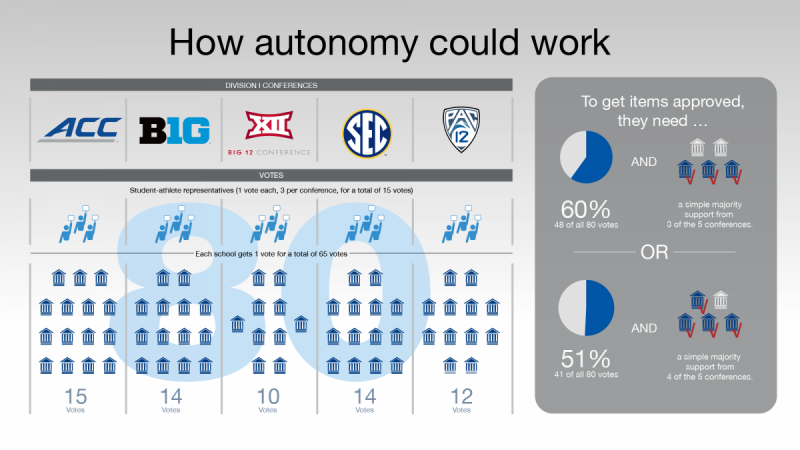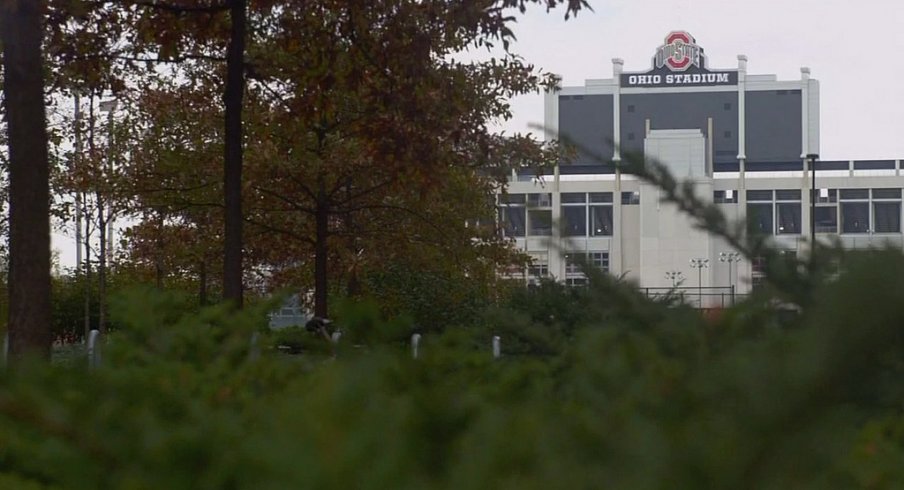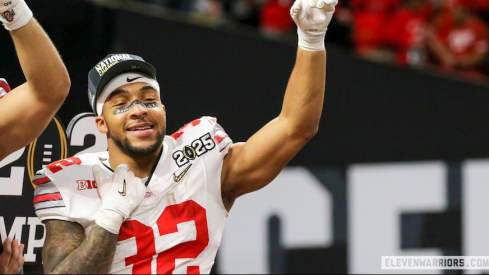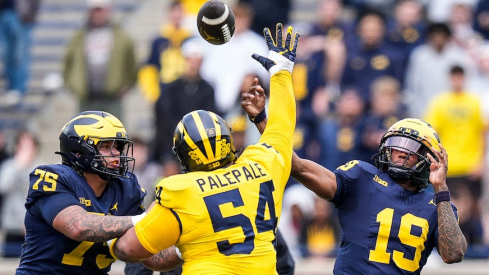In the last 48 hours, the world of college athletics has felt two gargantuan shocks – and Ohio State's place in that world doesn't look so permanent anymore.
The first shock was the NCAA's Division I Board of Directors voting to allow the Power 5 (P5) conferences – the ACC, Big 12, Big Ten, Pac-12 and SEC – to practice autonomy. They would have more control over their own affairs, able to pass rules that would affect themselves only, like requiring scholarships to cover the full cost of attendance or provide more health care options.
For Ohio State, the decision is long overdue. Gene Smith has been clamoring for such a move for months, and the athletic department would love to have the leeway to provide full cost of attendance stipends to its athletes.
The second shock happened on Friday night, when Judge Claudia Wilken ruled in the Ed O'Bannon lawsuit that the NCAA violates antitrust law. She issued an injunction against the NCAA forbidding schools from offering players a share of revenue from their NIL (name, image and likeness) rights, or using licensing revenue to set up trusts for players upon leaving the university.
In combination, these events signal a shift in the way college athletics operates. Ohio State can take advantage of both events by supporting legislation to allow full cost of attendance scholarships and offering a licensing trust to its athletes. Even so, autonomy could present problems for Ohio State athletics.
The Great Divorce
In NCAA circles, the trend toward autonomy has been met with despair. John Infante of The Sporting News illustrates this trend:
Much will be said in the near future of how Division I was preserved, how the “big tent” is still intact, how this will provide stability and a foundation for the long-term. But if the people in Division I will not agree to keep up the pursuit of the ideal or even prop up that facade that all Division I athletes have a similar experience, the whole point of being one division is gone.
Sooner rather than later, Division I will be gone. [...] That day will be lamented as the end of Division I, but that will be like putting down an undead zombie. Today is the day that Division I as an idea, its soul, is well and truly dead.
Theatrics aside, Infante is right: this state is not workable in the long-term, and the P5 conferences are headed towards a split from Division I.
Outside the NCAA's confines, Ohio State could press its money advantage against the other 64 major schools. But is that a better outcome than staying in Division I?
In Division I, the Buckeyes do not have to pay its players beyond a scholarship and stipend (and may not have to for a while). The athletic department has total control over athletes' finances and eligibility while they're at the university, and the NCAA acts as a lightning rod to protect Ohio State from liability lawsuits. The athletic department is rolling in the dough; what more could it ask for?
Once separated from the fig leaf of NCAA amateurism, the P5 schools would likely be sued for illegal restriction of trade on the grounds that they are operating as a cartel. Ohio State would likely have to treat players as employees, pay salaries, negotiate and deal with all the other payroll issues. The Buckeyes could be as successful as they are now; unlike the status quo, it's not certain success.
Voting Gridlock
As long as autonomy is in effect, Ohio State is counting on sharing policy preferences with its P5 peers and passing more favorable legislation. Here's a mock-up the NCAA made of the new voting process:

It's a decent system with some drawbacks. Take the college baseball schedule. The Big Ten thinks starting the baseball season in February is stupid and is designed to put them at a competitive disadvantage, which it obviously does. The other major conferences think the Big Ten is a bunch of whiners.
As an equal member of Division I, Ohio State could propose a later starting date for the baseball season. This would be voted on by all kinds of schools, and the proposal could gain some support from lower-tier and northern schools. Among the P5 conferences, OSU (and by extension the Big Ten) would be thoroughly outvoted and laughed at. Conversely, if the other four conferences decided to pass legislation to declare August 9 "The Big Ten Is Weird Day", Big Ten schools do not have the votes to block it.
The autonomy structure is a lot like the United Nations Security Council. There are five permanent members that make decisions on everything, and anything controversial leads to gridlock. The current NCAA voting system is more like the UN General Assembly, which doesn't address vital issues but is at least equitable. The Buckeyes might prefer no changes at all over changes they dislike.
Dissolving Regional Ties
Even if the Big Ten hates OSU, Ohio State is enriched by its ties with them. The same goes for the smaller schools in the Buckeye State.
Ohio is unusual in that it has a dozen Division I programs and only one in a major conference. Nobody will ever challenge Ohio State's dominance, which means the relative importance of Ohio athletics will be diminished under autonomy. When the P5 schools split, Cincinnati will become roughly as irrelevant as Akron is now, and Akron will be as irrelevant as Youngstown State.
Losing the smaller Ohio schools might not bother OSU, but losing Big Ten schools would. Matt Hinton at Grantland writes that "The logical end of [autonomy]... is further consolidation into a single, coherently organized entity resembling a pro sports league, with the top 40 or so schools further culling the ranks until it’s no longer profitable to do so."
More than a third of the 65 P5 schools would have to be jettisoned to reach a top 40. That culling wouldn't remove Ohio State from power, but it might derail half of the Big Ten. Teams like Purdue or Wake Forest or Vanderbilt would have no place, and those are the easy discards.
The top half of the Big Ten (OSU, Michigan, Penn State, Nebraska, Wisconsin, Michigan State, Iowa) have a solid chance of making a top 40 cut. Everyone else in the Big Ten would be in a dogfight to stay relevant. And even if they did, they would have a hard time keeping up without cupcake games to prop up their records. What if they become a permanent drain on Ohio State's schedule, dragging down Ohio State's national championship chances like the Western Athletic Conference did to Boise State's?
Other Sports
Aside from other hypotheticals, like a split bringing the end of March Madness as we know it, the legal implications of autonomy are important. In Friday's O'Bannon ruling, Wilken spared member schools from the injunction she placed against the NCAA. In a world where the P5 splits from the NCAA, who knows what they'll have to do to comply with anti-trust law?
Autonomy might also a step on the path to abandoning low-revenue sports. Football and basketball provide most of the athletic revenue for the Buckeyes, and will even more so with autonomy. Low-revenue sports make easy targets; unless forced to do so by a judge or legislation, would OSU ever increase compensation to football or basketball players by taking money from their coaches' salaries or cutting a sport?
Risk And Reward
Autonomy has its pluses. No longer does Ohio State have to carry an overstuffed compliance department or report dozens of ticky-tack secondary violations. Ohio State can stop worrying about pointless, extraneous procedure and finally hew away from the NCAA's farcical idea of amateurism.
Autonomy is still risky. It changes the status quo, which favors the Buckeyes. Ohio State could get outvoted on important issues, and if the push for autonomy is just a naked cash grab, it could irreparably damage college athletics. Again, Matt Hinton:
Is that kind of upward mobility important to the fabric of college sports, part of what separates them from the year-to-year uniformity of the pros? Is it still possible to maintain when the wealthiest organizations can set their own rules and erect their own barriers to entry? If so, it’s not clear that anyone cares. And even if they do, it’s too late to turn back now.
It might still be worthwhile to chase autonomy and even a separation from the NCAA, but the long-term consequences could be harmful. The athletic department cannot afford to make the decision blind.


